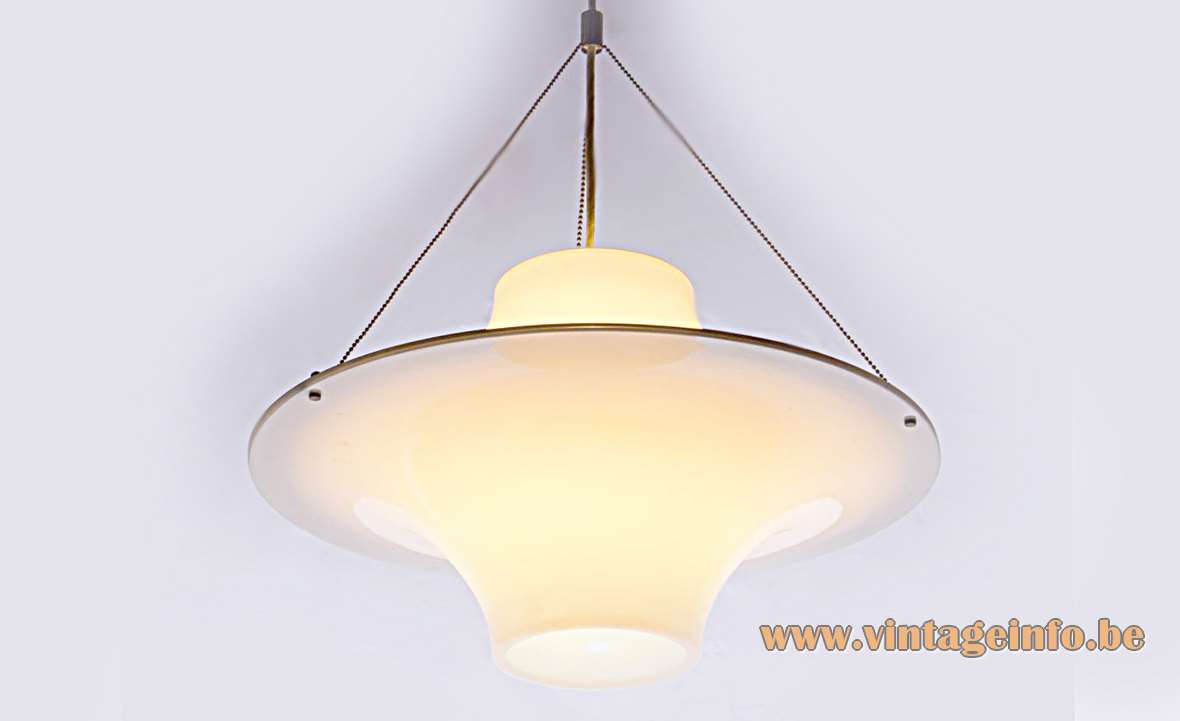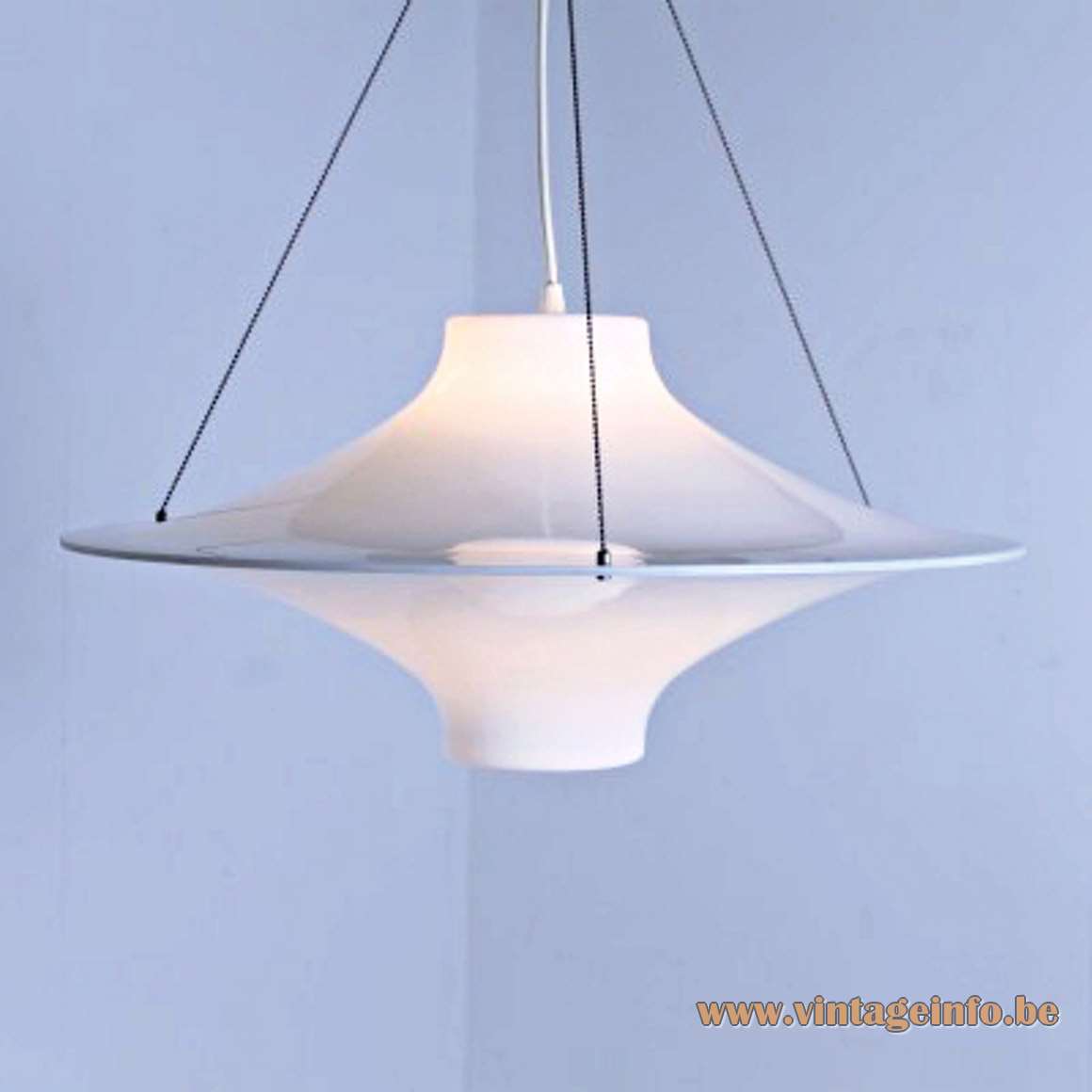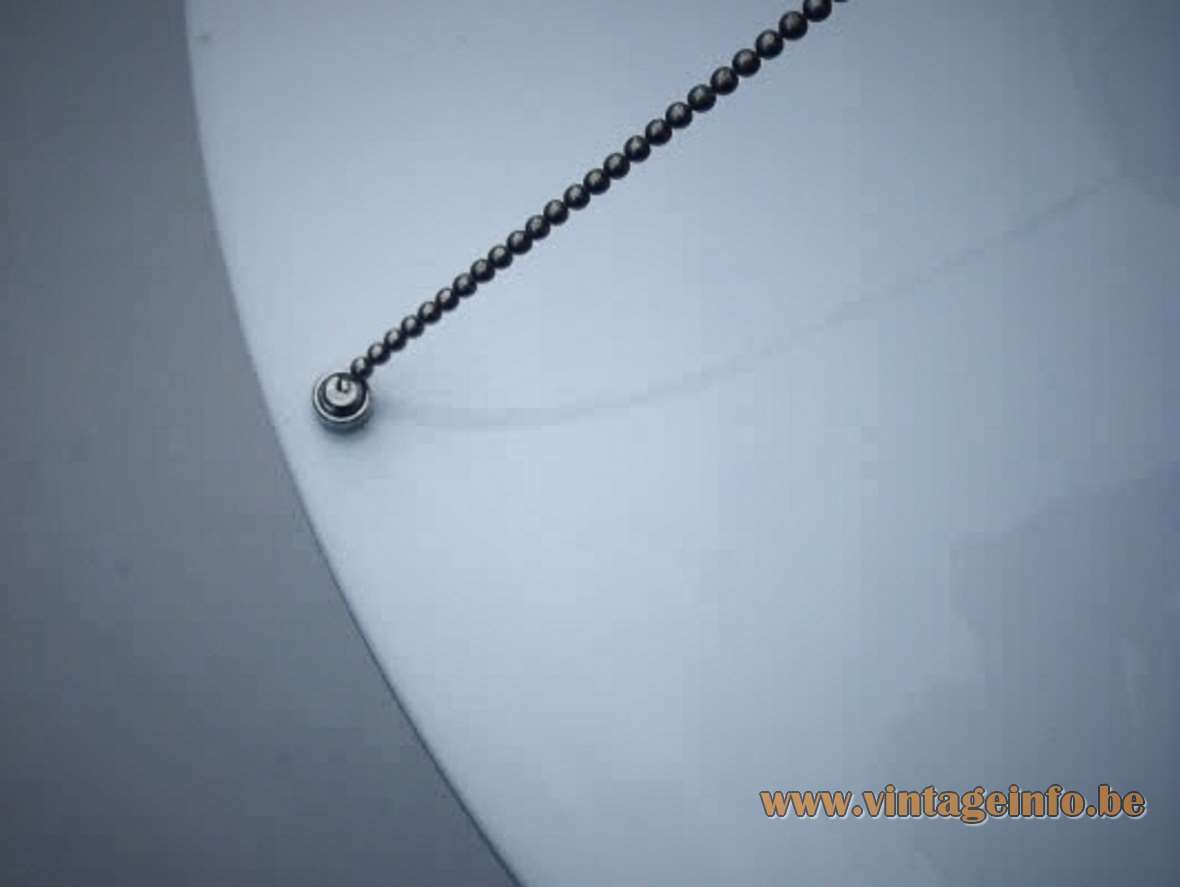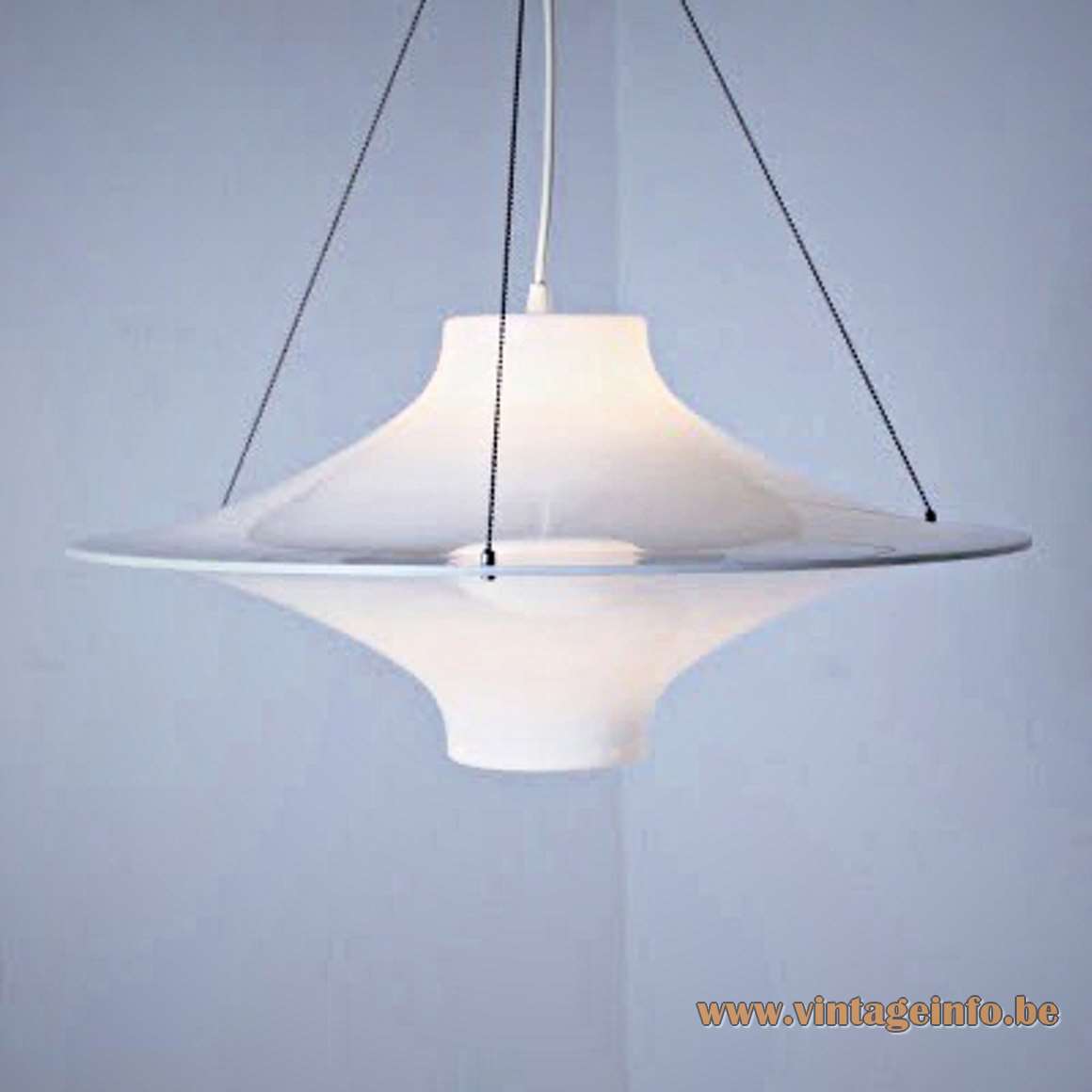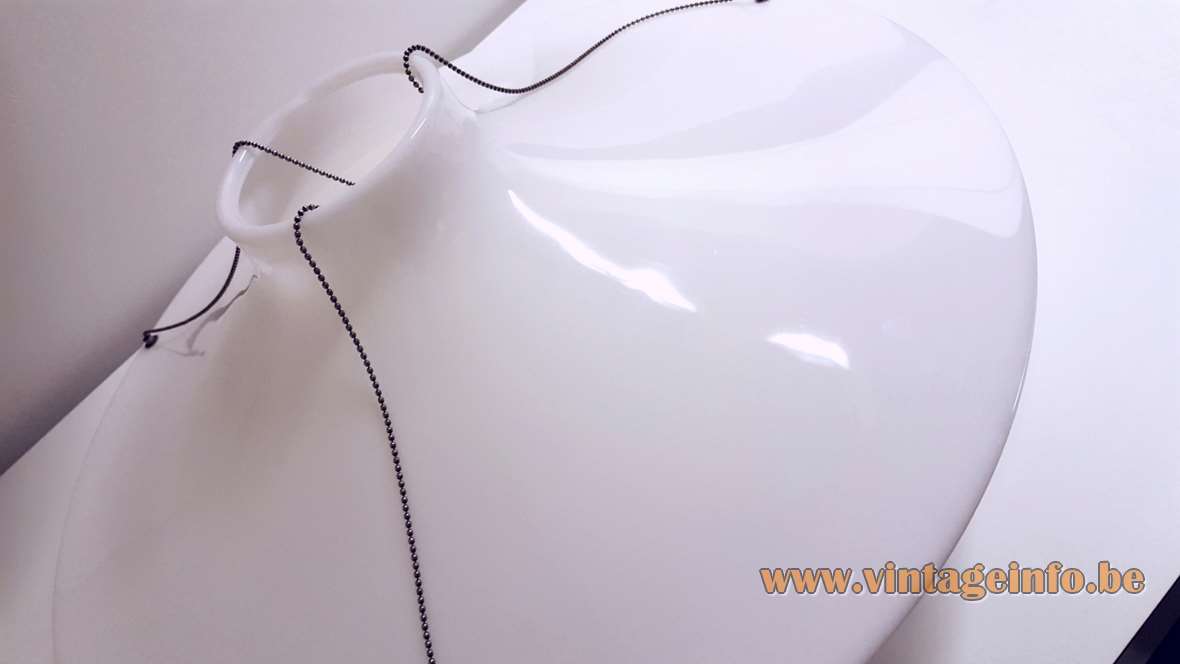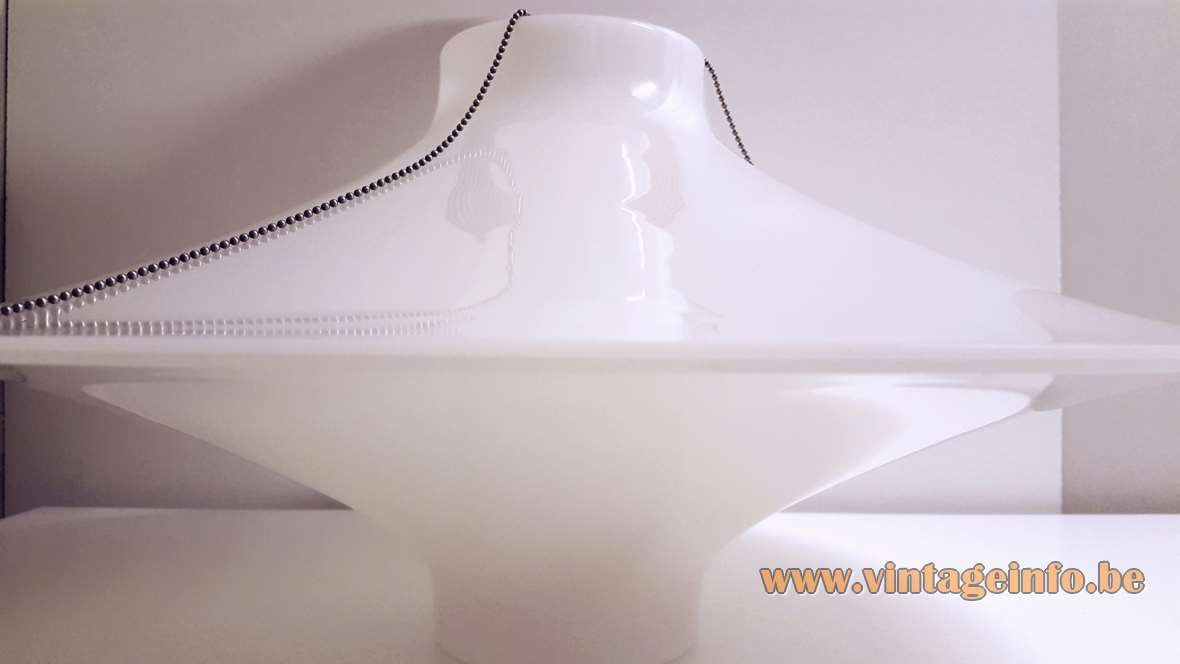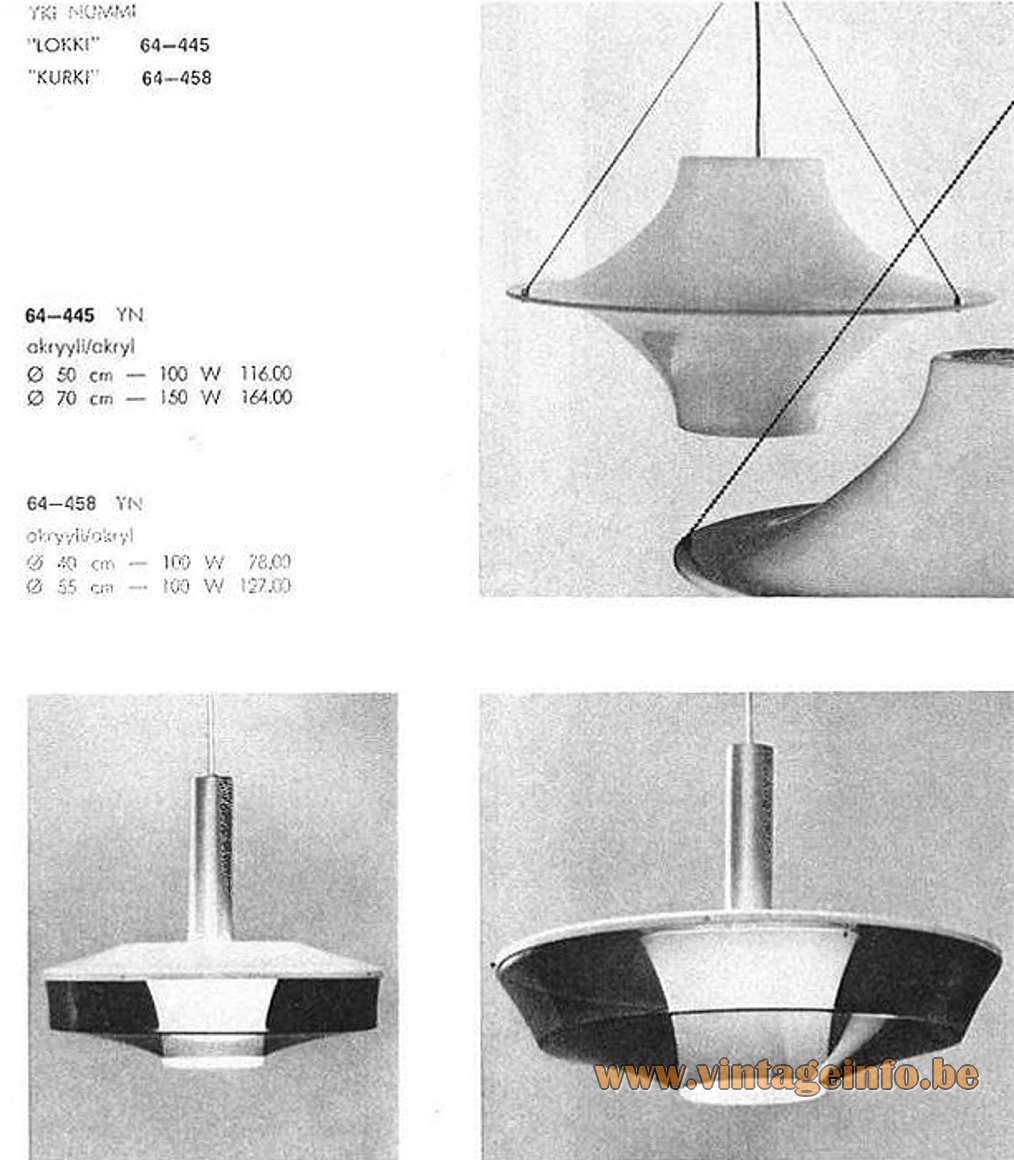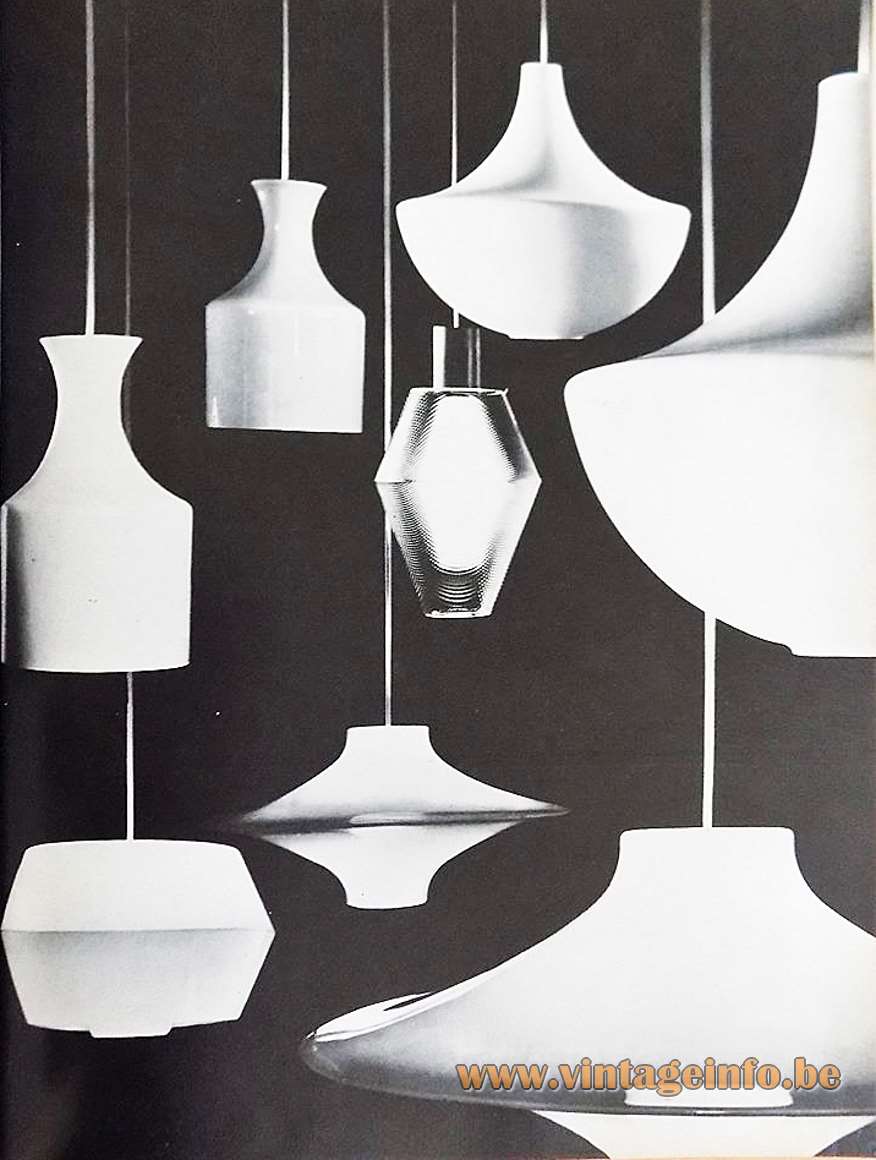Links (external links open in a new window)
Yki Nummi at the MoMA in New York
Sanka Oy – Wikipedia – in Finnish
Stockmann-ORNO – Wikipedia – in Finnish
The Yki Nummi Lokki pendant lamp on the Innojok website
The Yki Nummi Lokki pendant lamp and the Modern Art table lamp on the Keraplast website
Vintageinfo
Tubular pendant lamp by Yki Nummi
Yki Numi cuboid acrylic wall lamps
1951 Stockmann Orno Lighting Catalogue
1957 Stockmann Orno Lighting Catalogue
1964 Stockmann Orno Lighting Catalogue
The Yki Nummi Lokki pendant lamp in the Stockmann ORNO catalogue of 1964 together with the Kurki pendant lamp. Both designed by Yki Nummi.
Yki Nummi Lokki Pendant Lamp
Materials: White acrylic UFO style lampshade. 3 chrome ball chains. Some metal parts. Bakelite E27 socket.
Cord length: 90 cm / 35.43”
Height: 32 cm / 12.59”
Width: ∅ 70 cm / 27.55”
Electricity: 1 bulb E27, 1 x 100 watt maximum, 110/220 volt.
Any type of light bulb can be used, but a white/opaque or frosted bulb is preferred for this type of lamp.
Period: 1960s – Mid-Century Modern.
Designer: Yki Nummi (1925-1984).
Manufacturer: Sanka Oy, Loviisa, Finland for Oy Stockmann A.B. ORNO Metalworks, Kerava, Finland.
Other versions: The Yki Nummi Lokki pendant lamp also exists in a smaller version: ∅ 50 cm (19.68”) width, as you can see in the catalogue picture.
Yki Nummi
Yki Nummi was born on October 31, 1925 in China as a child of a Finnish missionary. Later on, he studied mathematics and physics in Turku and Helsinki and afterwards he studied design at the School of Applied Arts in Helsinki from 1946 until 1950.
He worked as lighting designer for the Finnish Stockmann-ORNO A.B. light factory from 1950 to 1975 and designed hundreds of light fixtures.
Lokki
The best-known light fixtures are the Modern Art table lamp in 1955 and this pendant lamp, the Lokki. Lokki means seagull in Finnish, but they are sold as Sky Flyer or Flying Saucer.
The Lokki was designed in 1960 and is currently manufactured by Keraplast and Innojok Oy (Innolux), both Finish companies. In Germany and The Netherlands these lamps were produced by Adelta. The Dutch part of Adelta from Wassenaar seems to be disappeared since 2018. The website was located at www.adelta-agency.nl.
MoMA
Keraplast and Adelta also produces the Modern Art table lamp. Keraplast has named it the New York table lamp. The Modern Art table lamp was acquired by the MoMA museum in New York, for their collection as a modern European Design Product of 1958, and that’s how the lamp got it’s name.
Yki Nummi participated in a large number of exhibitions and fairs. His works were awarded gold medals at the Milan Triennials of 1954, 1957 and 1960. He received the Pro Finlandia medal in 1971. Nummi also designed spotlights for the world-exhibition in 1958 in Brussels, Belgium.
Yki Nummi summarised his vision by saying ”People don’t buy lamps, they buy light”.
Yki Nummi passed away in Finland, only 58 years old on March 12, 1984.
Sanka Oy
The acrylic lamps of Stockmann-ORNO were made by Sanka Oy, founded in 1950. The company focused on the design of acrylic plastic, which was a new material at this time. Sanka still exists but since the 70s they produce showers.
Stockmann-Orno A.B.
Stockmann-ORNO A.B. was a major lighting factory, founded in 1921 in Helsinki, Finland. In 1936, Stockmann became the owner of ORNO an the company moved to Kerava in 1937.
Before and during World War II the luminaires were designed by Bertel Lindholm, Gunilla Jung-Pircklén and Gunnel Nyman. From the late 40s to the 60s, ORNO’s main lighting designers were Lisa Johansson-Pape and Yki Nummi.
At the turn of the 50s and 60s came Heikki Turunen and Svea Winkler working for the company. In the mid-60s, Japanese lighting designer Motoko Ishii, who had become known since then, practiced at ORNO. She became famous for the lighting she designed for the German company Staff & Schwarz Leuchtenwerke GMBH. Also Tapio Wirkkala designed lamps for the company.
Stockmann sold ORNO in the mid-80s to Asea, a Swedish company, from which ORNO became the owner of Thorn-Em, England. The name changed in Thorn-ORNO. The factory closed its business in 2001, but Thorn still exists. Thorn is now part of the German Zumtobel Group.
Some ORNO lighting is currently manufactured by at least Keraplast Oy and Innojok Oy.
Acrylic: often named by its commercial name: Perspex, Plexiglas, Crylux, Acrylite, Lucite, is a thermoplastic.
Many thanks to Marjan from Vintage Drachten for the beautiful pictures and the enthusiasm.
